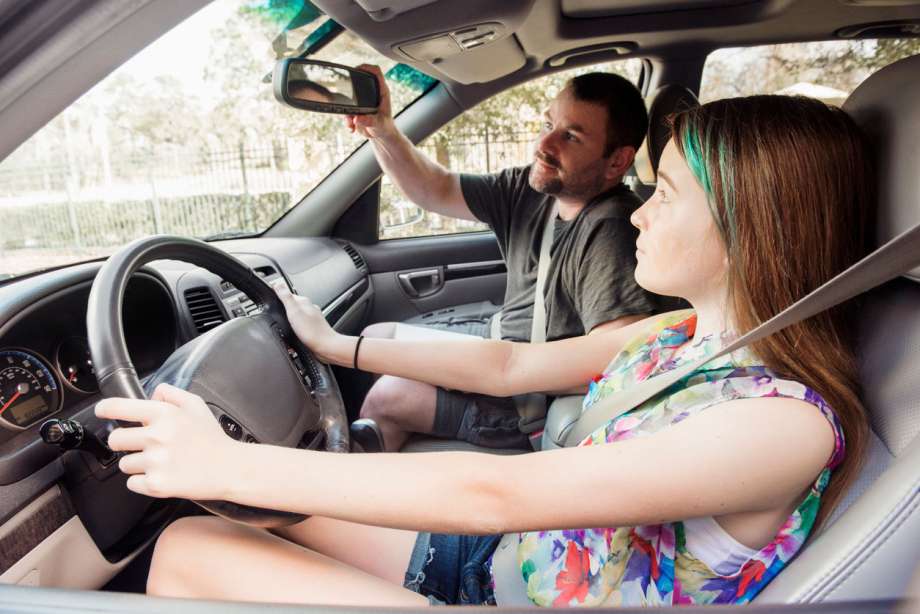7 Safety Tips to Follow When Teaching Your Teen to Drive

Among the most dreaded of parenting experiences—right up there with potty training and your child’s first day of school—is teaching your teenager to drive. But as much as you may want to deny that your son or daughter is old enough to reach the pedals, let alone get a license, it’s important that you recognize the essential role you play in their driving education.
More: Teaching Your Teenager to Drive
Teens are three times more likely than adults 20 and older to be involved in a fatal car crash. Help them avoid becoming another statistic by taking their driving lessons seriously.
Here are seven safety tips to follow when teaching your teenager to drive.
Master the Basics
Always make sure your lessons are appropriate for your son or daughter’s current skill level. For your first few lessons, that means teaching the basics.
Before you allow your teen to drive, it’s important that they become comfortable sitting behind the wheel. Give a tour of the vehicle, including the gas and brake pedals, turn signals, dashboard controls, and parking brake. You should also show them how to adjust their mirrors, and where they should place their hands on the wheel. Your teen should be able to repeat everything back to you before you put the keys in the ignition.
Your first lesson should be in an empty parking lot or someplace similar. By starting in an empty lot, your son or daughter can practice starting, turning, and stopping the car at different speeds without having to worry about hitting anything. When they are ready to navigate obstacles, start with traffic cones.
Map Your Route
Know where you’ll be driving before you set out with your teen, particularly if it’s one of their first lessons. Your child is navigating unfamiliar territory behind the wheel and doing everything for the very first time, all the while knowing that one little error they make could have tragic consequences. The more structure and predictability you can provide them, the better.
Plus, if they are just starting out, you’ll want to avoid freeways and congested roads that may be above their skill level. If you don’t know where exactly you’re going, it could be difficult to avoid these areas.
Identify the Skills You Will Work On
Just like you should plan your route before each lesson, you should also identify the skills your teen will practice during each session. Maybe it’s left-hand turns or parallel parking. Consider these as you map out where you’ll be driving; if it’s left-hand turns you want your child to master, make sure there are plenty on your route.
Minimize Distractions
When your teen is learning to drive, it’s important that you eliminate unnecessary distractions so that everyone, including you, can stay focused on the road. Don’t play music, and keep phones out of sight. That includes your phone, too.
While you may not be the one driving, you are your child’s second pair of eyes until they learn how to look for cars and obstacles themselves. You should also be constantly anticipating your child’s next move so that you can guide them when they need to switch lanes or stop at an upcoming traffic light. Telling your new driver to merge at the last minute because you were texting will likely cause them to panic.
More: Teen Texting and Driving: A Modern Day Hazard
Don’t Raise Your Voice
Mistakes will happen. While you can’t prevent them, you can control how you react to them. Don’t raise your voice when speaking with your teen or say general statements like, “You aren’t taking this seriously.” It will only upset them, which won’t help them drive any better.
Instead, point out specific behaviors and mistakes like, “Next time, you should signal earlier.” And, always speak with a calm voice—even if you just barely avoided a crash or if your teen is shouting at you.
Practice Driving in All Types of Conditions
Don’t underestimate the importance of learning how to drive in inclement weather or with poor visibility. Rather than skip your lessons when it’s raining, snowing, or as soon as the sun sets, allow your teen to practice driving in these conditions with your supervision.
When they become comfortable driving around your home, incorporate more challenging roads and traffic conditions. They should practice driving on the highway, on congested city streets, and on curvy, winding roads before they start driving independently.
Let Your Teen Practice As Often As They Can
You can’t learn how to drive by reading a book or watching a video; you have to log miles behind the wheel. The CDC recommends that teens have at least 30 to 50 hours of supervised driving experience over a six-month time period.
A driver’s license doesn’t necessarily mean that a teen has mastered every aspect of driving. In simulated driving tests, licensed teen drivers are still much more likely to crash than licensed adult drivers. The more your child can practice with you though, the safer they’ll be when they start driving on their own.
For more teen parenting advice and wisdom, follow us on Pinterest:

